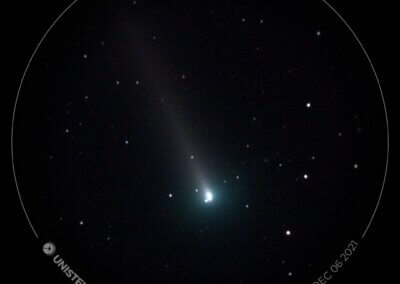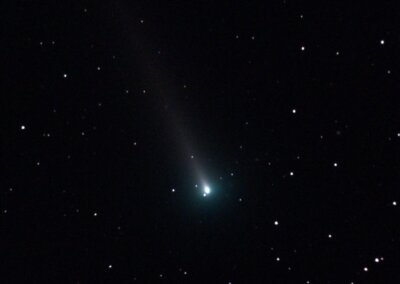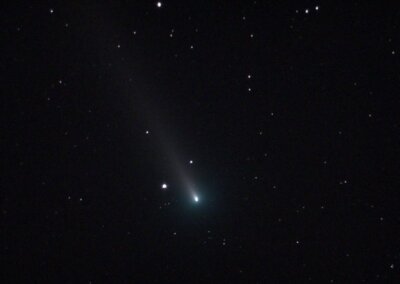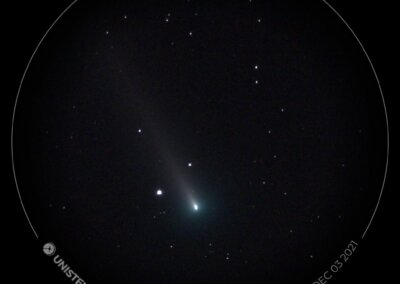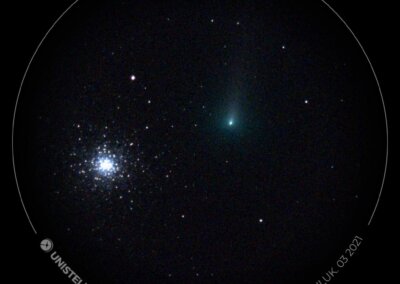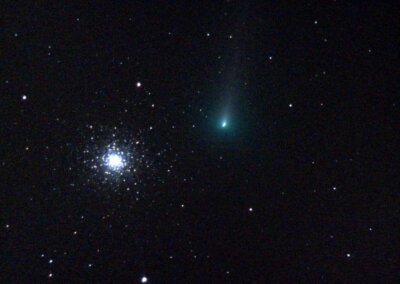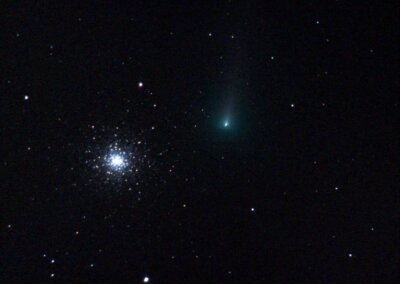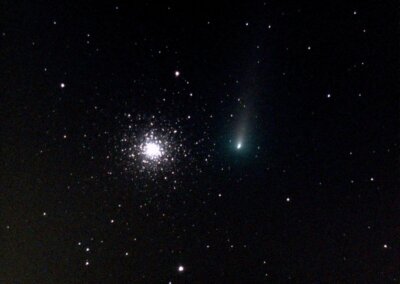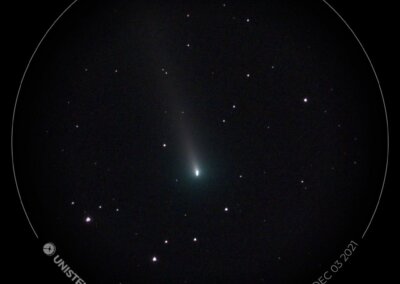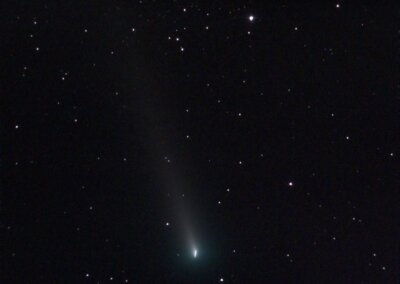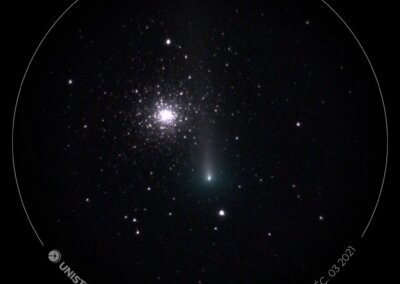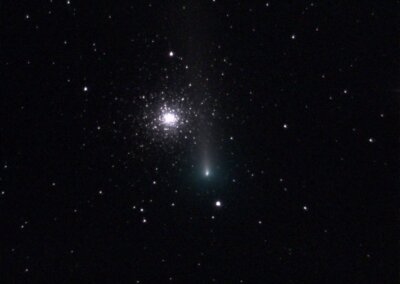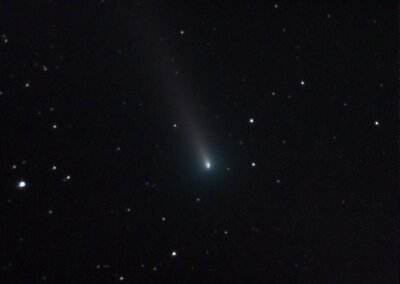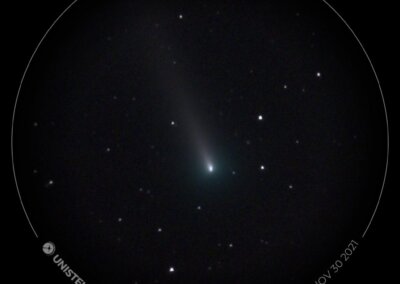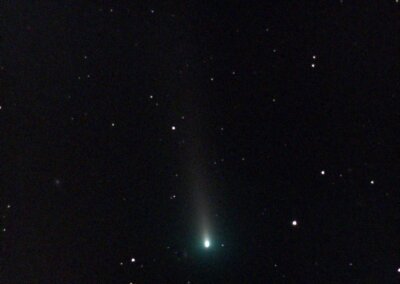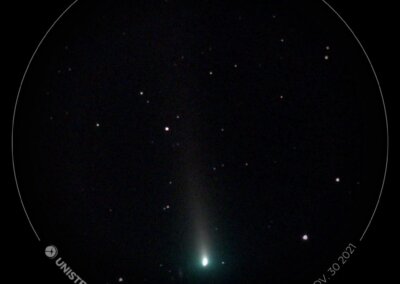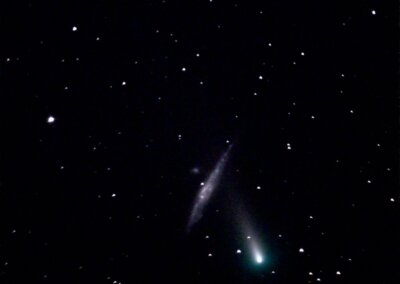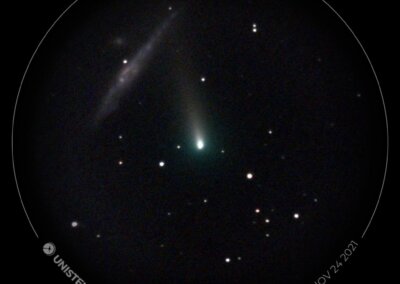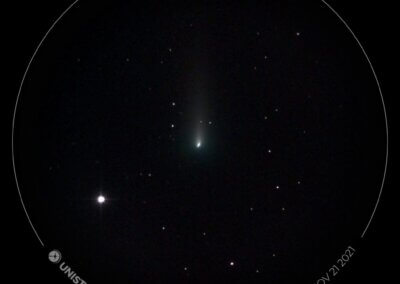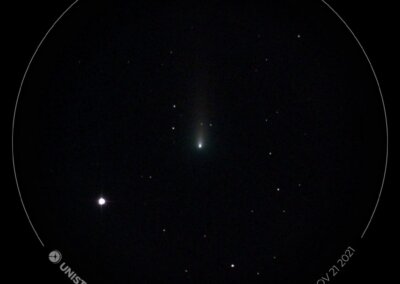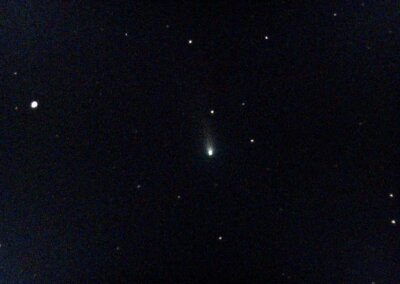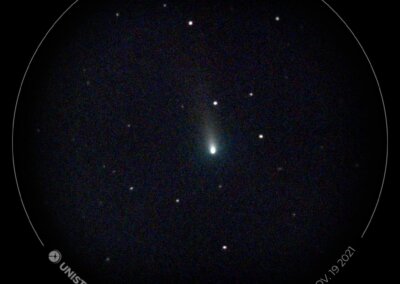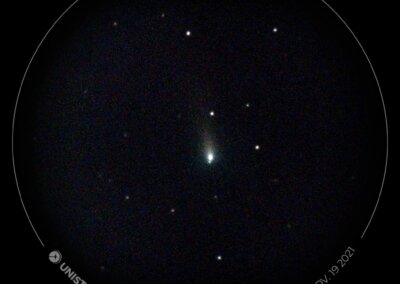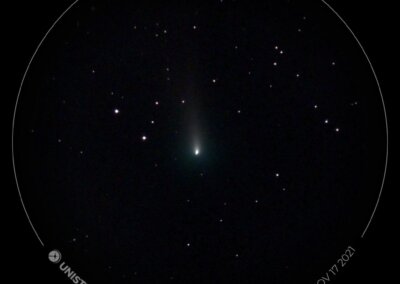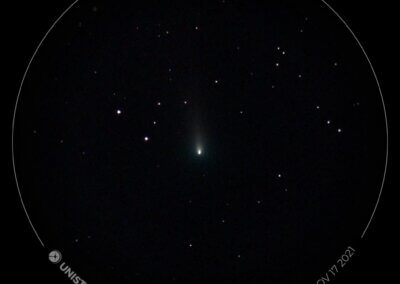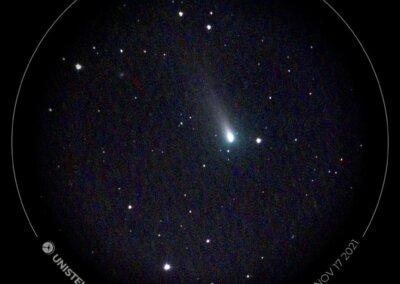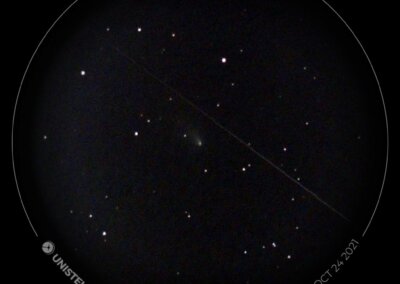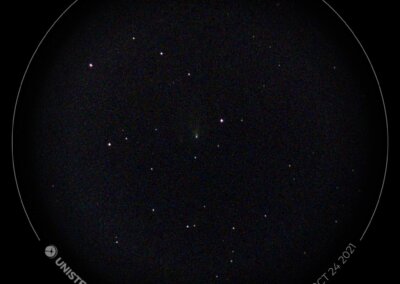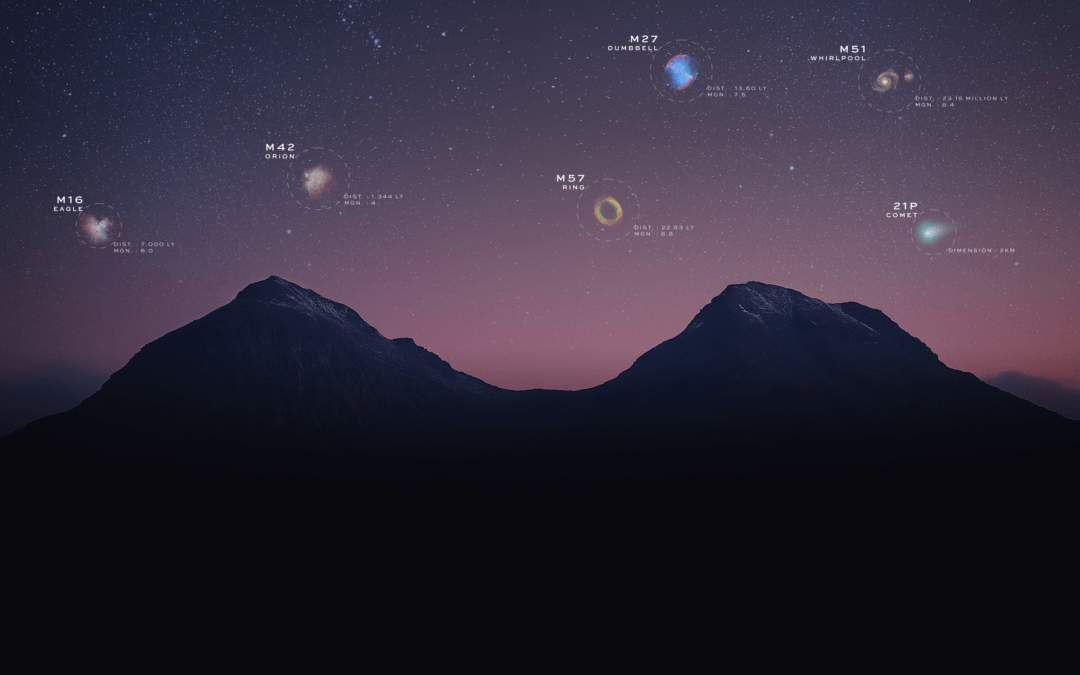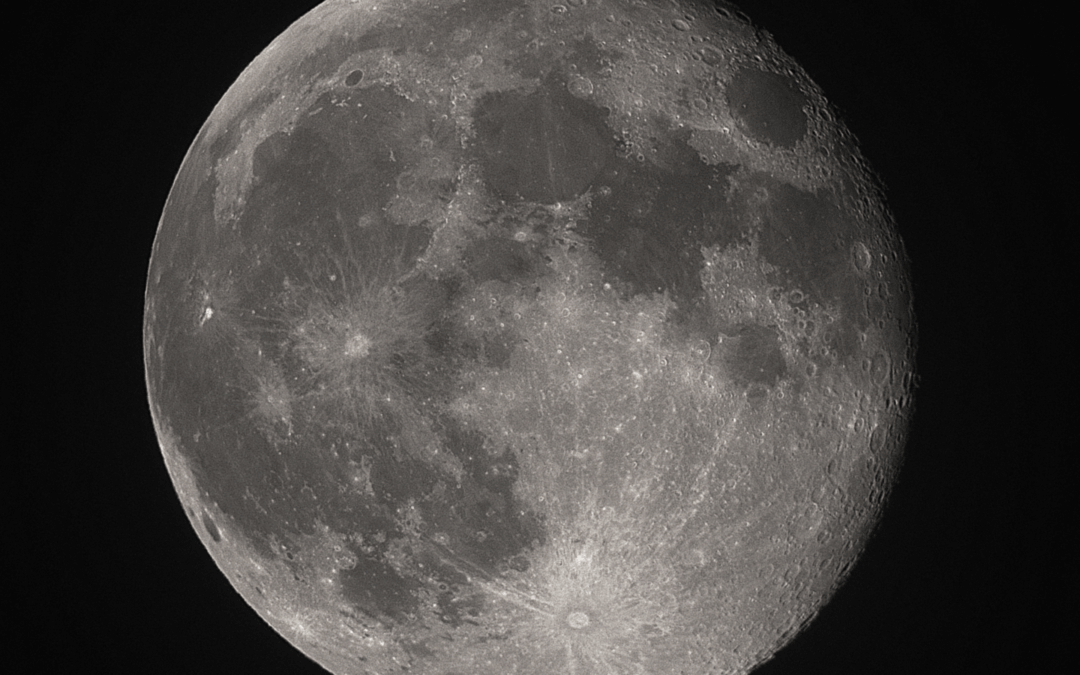Comet Leonard is making a striking appearance in the night sky this December as it travels past Earth on its long journey. Discovered just this year, Leonard, also known as C/2021 A1, has been traveling inward toward the Sun for an estimated 40,000 years on an elongated orbit that takes it hundreds of billions of miles away.
Recent Images of Comet Leonard from the Unistellar Community
When to observe Comet Leonard
For observers in the Northern Hemisphere, look to the eastern sky before dawn. If you look with a pair of binoculars or a telescope, you’ll be able to see Leonard’s bright body and tail, the result of the Sun’s heat melting the comet’s icy body. The comet will be visible in the morning until the 10th, after which it will be too low in the sky to see.
Leonard will pass closest to our planet on December 12, when it will be just 21.6 million miles away. Following this, it will be visible to observers in the Southern Hemisphere in the western-southwestern sky through December 21.
How to observe Comet Leonard with your eVscope
Unistellar eVscope users can easily find Leonard using the Unistellar app. Simply type “Leonard” in the Explore tab, and select “C/2021 A1 (Leonard).”
Comets are unpredictable; watch this one when you can, since it may break apart or have an outburst which could make it spectacularly bright for a few hours.
Just last year, Unistellar citizen astronomers were able to watch Comet ATLAS disintegrate, creating the first-of-its-kind crowd-generated images for scientists. This time, observing how the comet changes in appearance as it approaches the Sun could yield important data on how comets evolve.
Don’t miss your chance to see this fast-flying comet! After whipping by the Sun, Leonard is predicted to gain enough momentum to fly out of the Solar System entirely, away from us forever.
We encourage you to share your observations and join the conversation through our Facebook, Instagram and Twitter pages using the hashtag #UnistellarChallenge!
If you’d like to send us your observations by email, send them to [email protected].
Clear skies! 🔭
Further readings
3 Reasons to observe this month
Every month, discover three unmissable celestial events to observe with your Unistellar telescope.
Observing Eclipses on Jupiter: Cosmic Spectacles Through a Telescope
The latest Unistellar App Update, version V3.0, is now live. Explore a smooth stargazing experience !
Unistellar Community Included In Multiple Scientific Papers
Did you know Unistellar Citizen Astronomers are often cited in published scientific papers? Find out how you can contribute too!
What Are the Names of All the Full Moons in 2024?
Discover the enchanting names of the full moons in 2024. Delve into the unique character of each lunar spectacle and embrace the allure of the night sky.
New Unistellar App Update: Version 3.0
The latest Unistellar App Update, version V3.0, is now live. Explore a smooth stargazing experience !
What to Observe This November: Open Star Clusters and More
These Halloween deep-sky objects will add some light to those dark, spooky nights. Treats, tricks, and telescopes await!

